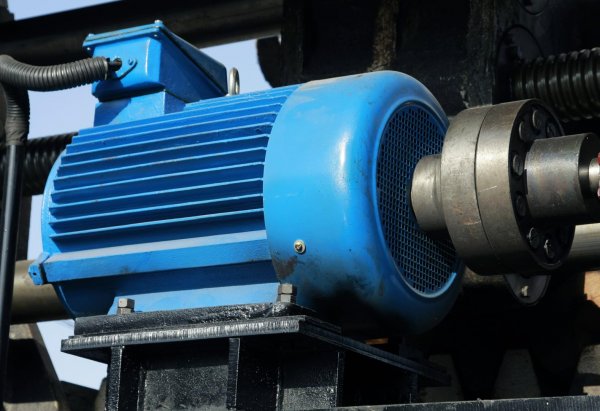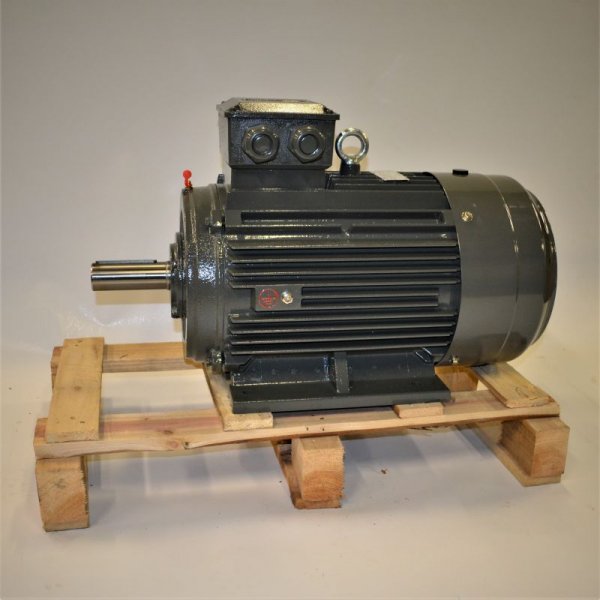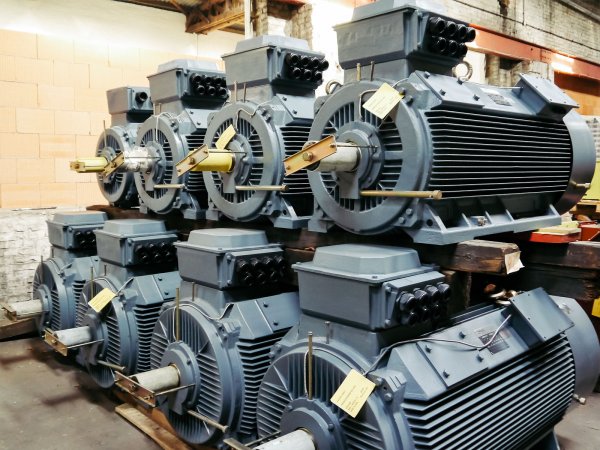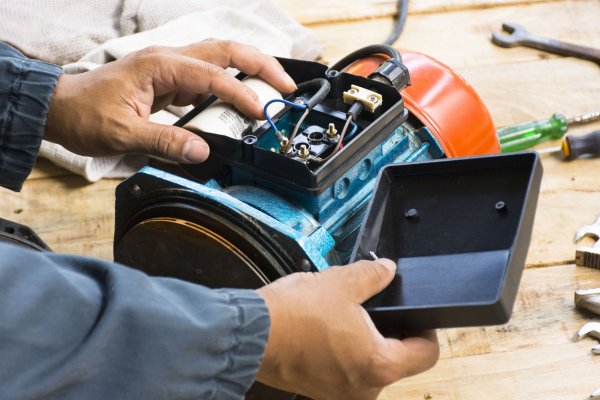Comparison of different types of electric motors (what is the difference), characteristics, advantages and disadvantages, characteristics of their use
The design possibilities of electric motors guarantee the fulfillment of various requirements — in terms of power, mechanical characteristics and external working conditions. This allows the electrotechnical industry to produce specialized series of motors intended for certain industries, most fully corresponding to the mode of operation of these working machines.
The selection of an electric motor begins with the selection of the type of motor corresponding to the mechanical characteristics of the operating mode of the drive mechanism, taking into account the economic characteristics of the different types: price, efficiency, cos phi.
The electrical industry produces the following types of electric motors:
Asynchronous three-phase squirrel-cage motors
Of all types of electric motors, they are the simplest in design, mechanically reliable, easy to operate and control, and the cheapest. The mechanical characteristic is «rigid»: the speed changes little at all load values.Large starting current (5-7 times nominal). Controlling revs is difficult and has almost never been done before.
Multi-speed electric motors are produced, which are used in drives of metal-cutting machines and various units that do not have special devices for changing the speed. They are produced with a squirrel-cage rotor, two, three and four speeds, with switching the number of poles of the stator winding.
The main disadvantage of asynchronous electric motors is Power factor (cos phi) is always noticeably less than one, especially under load.
Currently, the problems associated with a large starting current of asynchronous three-phase electric motors are solved with the helpsoft starters (soft starters), and speed control problems are solved by connecting electric motors throughfrequency converters.
The advantages of asynchronous electric motors, which have provided such a wide and widespread application, are as follows:
-
high economic results. The efficiency of electric motors for mass use is in the range of 0.8-7-0.9, for large machines - up to 0.95 and more;
-
simplicity of design, mechanical reliability, ease of management;
-
the possibility of release to any practically necessary capacity;
-
easy applicability of the engine's structural forms to operational conditions: at elevated temperatures, outdoor installation and exposure to various climatic factors, in the presence of dust or high humidity, in explosive conditions, etc.
-
simplicity of automatic control, both as a single working machine and a group of them connected by a single production process.
Asynchronous three-phase electric motors with slip rings and rheostat starting
Compared to a short circuit — greater complexity of controls and high cost. The rest of the characteristics are the same as for asynchronous three-phase electric motors with a squirrel-cage rotor.
Asynchronous single-phase electric motors
Compared to three-phase — lower efficiency, lower cos phi. They are produced only in small unit capacities.
The device and principle of operation of asynchronous electric motors
Multi-speed motors and their use
Synchronous motors
Structurally more complex and more expensive than asynchronous; more difficult to manage. The efficiency is significantly higher than that of asynchronous ones. The revolutions depend only on the frequency of the current and at a constant frequency are strictly unchanged for all loads. Speed control does not apply. The main advantage is the possibility to work with cos phi = 1 and in capacitive mode. They are produced and used mainly in unit capacities above 100 kW.
How to distinguish a synchronous motor from an induction motor
Methods and schemes for starting synchronous motors
AC motors
The main advantage is good speed control. Structurally complex. The presence of a collector and brushes affects the reliability of the electric motor and requires their special maintenance.
Electric motors with direct current, series, parallel and mixed excitation
Structurally, it is much more complex and much more expensive than asynchronous. They are more difficult to control and require constant operational supervision. The main advantage is the easy ability to smoothly and in a fairly wide range of speed control.
The mechanical characteristics of series motors are «soft»: the speed changes very sensitively with the load, the speed of the shunt motor changes little with load fluctuations.
A common disadvantage of DC motors is the need for additional devices to obtain direct current (magnetic amplifiers, thyristor voltage regulators, etc.).
The device and principle of operation of modern brushless DC motors
Electric motors of automatic control systems: stepper motors and servo.
What is the difference between a servo drive and a stepper motor
Within the selected type, the motor is selected for the required rotational speed and required power.
The right choice of engine from the point of view of power is very important, significantly affecting the economic indicators and the productivity of the working machines.
The result of overestimating the installed power of motors will be operation with reduced efficiency values, and for AC induction motors with reduced cos phi values, in addition, capital investment for electrical equipment will be overestimated.
Underestimating the power will inevitably lead to the fact that the engine will overheat and quickly fail.
The greater the load on the engine, the greater the amount of heat generated in the car, meaning the higher the temperature at which it will settle thermal equilibrium.
In the design of electrical machines, the most temperature-sensitive element that determines the load capacity of the machine is the insulation of the windings.
All energy losses in the motor — in its windings ("copper losses"), in magnetic circuits ("steel losses"), in friction of rotating parts against air and in bearings, in ventilation ("mechanical losses") are convert to heat.
According to current standards, the heating temperature of the insulating materials commonly used for windings of electrical machines (class A insulating materials) should not exceed 95 ° C. At this temperature, the motor can operate reliably for about 20 years.
Any increase in temperature above 95 ° C leads to accelerated wear of the insulation. Thus, at a temperature of 110 ° C, the service life will decrease to 5 years, at a temperature of 145 ° C (which can be achieved by increasing the current strength compared to the nominal, by only 25%), the insulation will be destroyed for 1.5 months, and at a temperature of 225 ° C (which corresponds to an increase in current strength by 50%) the insulation of the coil will become unusable within 3 hours.
What determines the service life of electric motors
The choice of motor in terms of power is made depending on the nature of the load created by the drive mechanism. If the load is uniform, which happens in the drive of pumps, fans, the motor is taken with a rated power equal to the load.
However, much more often, the engine load schedule is uneven: load increases alternate with decreases, until idling. In these cases, the motor is selected with a rated power lower than the maximum load, because during periods of reduced load (or braking) the motor will cool down.
Methods have been developed to select engine power in accordance with its load schedule, i.e. with the operation mode of the drive mechanism. These are outlined in special guides.
Selection of electric motors for equipment with different types of load and operating modes
Selection of electrical equipment according to technical characteristics




